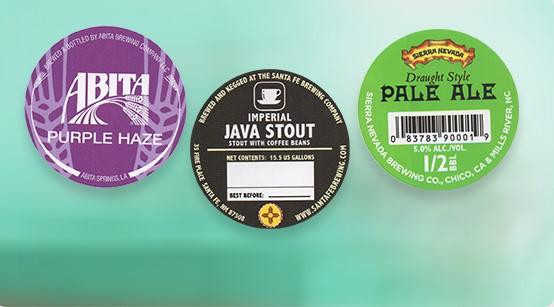In the world of craft beer, individuality and branding are key to setting your brew apart from the competition. One often overlooked, but vital element of beer presentation is the keg label. These labels serve as a canvas for brewers to express their creativity, convey important information, and establish their brand identity. In this article, we delve into the significance of beer keg labels, their design, and why they play a crucial role in the craft beer industry.
The Importance of Beer Keg Labels
Beer keg labels are more than just decorative stickers on a container; they are a brewer's communication tool. They provide essential information, such as the beer's name, style, alcohol content, and branding, to distributors, retailers, and consumers. But they are also an opportunity for brewers to express their unique personality and make a lasting impression. Keg labels serve as the initial point of contact between the beer and the consumer, making them a vital element of marketing and branding in the craft beer industry.
Key Elements of Beer Keg Labels
Brewery Name and Logo: This is the first thing consumers notice. It establishes your brand identity and builds recognition.
Beer Name and Style: The beer's name and style should be prominent and reflect the beer's character.
Alcohol Content (ABV): This is crucial information for consumers, particularly for those who want to know the strength of the beer they're consuming.
Legal Requirements: Ensure you include the necessary legal information, such as health warnings, government regulations, and barcodes where required.
Artwork and Design: The visual appeal of the label is vital for capturing attention and conveying the beer's personality.
Branding and Recognition
Beer keg labels are a vital branding tool. Consistency in label design and visual elements, including color schemes and fonts, helps consumers recognize your brand quickly. This fosters loyalty and trust. A well-designed keg label is a powerful marketing tool, making your beer stand out on the shelves or at the bar. It can also convey the story and personality of your brewery, creating a connection with the consumer that goes beyond the taste of the beer. For many craft brewers, the keg label is an integral part of building a strong and memorable brand.
Creative Design and Artwork
The design of a beer keg label is a canvas for artistic expression. Brewers often collaborate with graphic designers or artists to create visually appealing labels that represent the beer's character. Creative design elements, such as illustrations, typography, and color palettes, can evoke a specific mood or theme that complements the beer's style. Unique, eye-catching artwork can draw consumers in and spark curiosity about the beer. Craft breweries often use this artistic freedom to differentiate themselves from larger, more traditional beer producers.
Consumer Engagement and Storytelling
Beer keg labels can tell a story. They offer an opportunity to engage consumers on a deeper level. Craft brewers use their labels to share the history of the beer, the brewing process, or the inspiration behind it. This storytelling aspect resonates with consumers who appreciate the authenticity and passion that goes into crafting small-batch beers. A well-crafted narrative on a label can help consumers connect with the beer and the brewery, fostering a sense of loyalty and community.
Keg Labels and Industry Trends
The craft beer industry is dynamic and continually evolving. Keg label design trends follow suit. Some current trends include minimalist, clean designs that emphasize simplicity and focus on essential information. Sustainability is also a significant concern, with an increasing emphasis on eco-friendly label materials and printing methods. Additionally, labels are becoming more interactive, often featuring QR codes that link to brewery websites, providing consumers with more information and opportunities to engage with the brand.
Compliance and Regulations
While creativity is essential in keg label design, it must also adhere to regulatory requirements. Alcohol and beverage labeling regulations vary by country and region. Brewers need to ensure that their labels meet legal standards, which often include health warnings, government regulations, and mandatory disclosures. Non-compliance can result in fines, recalls, or distribution issues. Many breweries work closely with regulatory experts to navigate these complexities and ensure that their labels meet all legal requirements.
For More Info:-






Comments